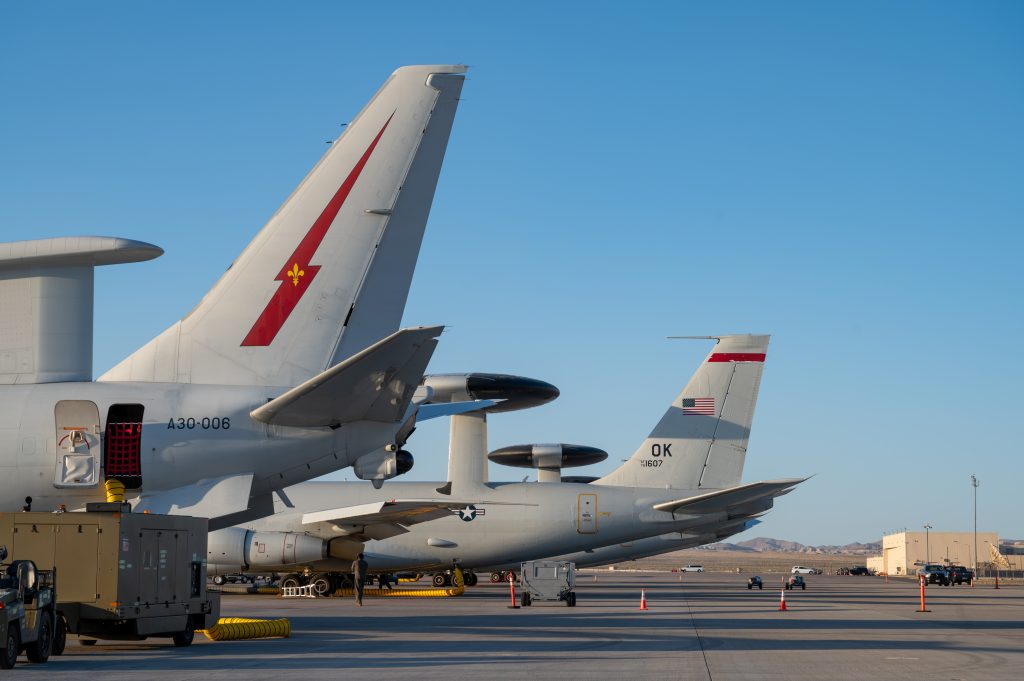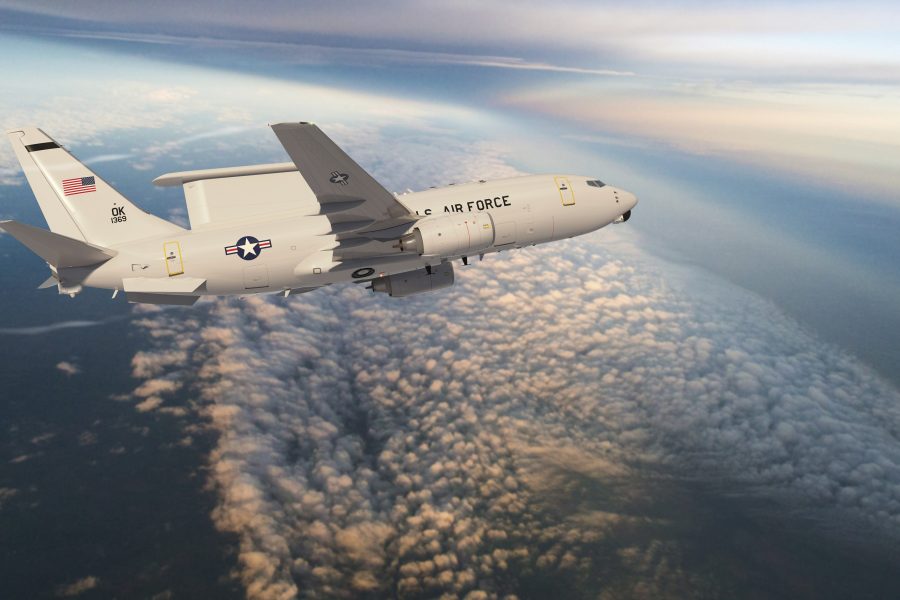The Air Force has ordered its first E-7A Wedgetail battle management and command and control aircraft, announcing Aug. 9 it has agreed to a deal with Boeing worth $2.56 billion for two platforms. The service says the deal is for “operationally representative prototype E-7A weapons systems” which Boeing plans to deliver in fiscal 2028.
“This agreement is a significant win for our warfighters, paving the way for ensuring the Air Force’s ability to provide advanced airborne moving target indication in the coming years,” Assistant Secretary of the Air Force for Acquisition, Technology, and Logistics Andrew Hunter said in a news release.
The aerospace giant and the Air Force had been hung up on the price for the first E-7As for months, delaying the fielding of aircraft, Secretary of the Air Force Frank Kendall said earlier this year. The Air Force and Boeing agreed to a price last month but the amount was not disclosed. The service and Boeing already had a contract for an unspecified amount to purchase and adapt the aircraft, which was originally designed for the Royal Australian Air Force, to U.S. Air Force requirements.
The E-7A will become the Air Force’s next-generation airborne early warning and control aircraft, which will also provide “moving target indication capabilities.” The E-7A is part of the service’s vision of a DAF Battle Network of connected sensors and shooters in multiple domains to be able to fight across the vast distances of the Pacific, its contribution to the Pentagon’s Combined All Domain Command and Control (CJADC2) effort. The E-7 will replace the aging E-3 Sentry AWACS, which by the time of its planned retirement towards the end of the decade will have served in the Air Force for half a century.
“Its advanced multi-role electronically scanned array radar will enhance airborne battle management, providing improved situational awareness and enabling long-range kill chains with potential peer adversaries,” the Air Force said of the E-7A in the release announcing the deal.
The E-7As will allow the service to ditch its E-3s, which, in addition to having an increasingly obsolete radar, are also based on an 1950s-era airframe design. The E-3 suffers from a lack of parts and maintenance issues, Air Force leaders say. The E-7A is based on the Boeing 737-700 NG commercial airframe, while the distinctive radar is built by Northrop Grumman. The Royal Air Force is also buying the E-7, and the variants of the platform are in service with the Republic of Korea Air Force, Turkish Air Force, and the RAAF.
Hunter said the E-7A is “an exemplar of our ability to leverage and support the expertise and investments of our partners and allies to support our common security objectives.”
The Air Force has had its crews training on Australian E-7s since 2022 through an exchange program that embeds Airmen in the Royal Australian Air Force. The crews were recently put to the test in the joint Pitch Black exercise.
“For us, the purpose is really to get a familiarity of the E-7A Wedgetail from the Australians who have been operating it for a long time,” U.S. Air Force Maj. Oliver Ngayan, 2 Squadron E-7A Wedgetail air battle manager, said in a July 29 news release. “We integrate into their unit to learn how they operate the E-7A and take back that knowledge to develop our own procedures.”
In a statement, Boeing said the contract award includes “lifecycle development, training, and support for the Air Force’s E-7A fleet.” For now, the Air Force plans to have a fleet of 26 E-7As. The service said the prototype aircraft will “inform a planned production decision in FY 26.”
In the long term, the Department of the Air Force believes space-based capabilities will increasingly replace AWACS aircraft such as the E-3 and E-7.



